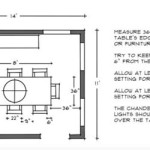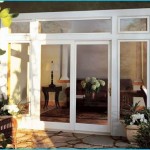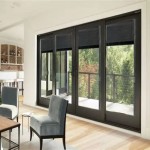Understanding Patio Furniture Weights: A Guide to Durability and Stability
Outdoor living spaces have become increasingly popular, with homeowners creating inviting retreats for relaxation and entertaining. Patio furniture plays a pivotal role in enhancing these spaces, and its weight is a crucial factor determining its longevity, stability, and overall enjoyment. Choosing patio furniture with the right weight ensures durability, prevents tipping or shifting in windy conditions, and provides a secure and comfortable experience for users.
Factors Influencing Patio Furniture Weights
The weight of patio furniture is determined by a combination of factors, including the materials used, the size and design of the furniture, and the construction techniques employed. Understanding these factors allows homeowners to make informed decisions about their furniture choices.
Materials significantly impact the weight of patio furniture. Heavy materials like wrought iron or cast aluminum contribute to heavier pieces, while lighter materials like resin or wicker result in more manageable weights. The thickness of the material also plays a role, with thicker frames and components adding to the overall weight.
The size and design of the furniture directly correlate with its weight. Larger pieces like sofas and dining tables will naturally weigh more than smaller chairs or ottomans. Complex designs with intricate detailing can also increase weight compared to simpler, streamlined options.
Construction techniques also factor into furniture weight. Welded frames are typically heavier than those constructed with bolts or screws, as the welding process increases the overall density. The presence of additional reinforcing elements, such as braces or crossbars, can also contribute to a heavier build.
Benefits of Heavy Patio Furniture
Heavy patio furniture offers several benefits, particularly in terms of durability and stability. The added weight provides a solid foundation, resisting movement and ensuring a secure seating experience. This is especially crucial for furniture placed on uneven surfaces or exposed to windy conditions.
Heavy furniture is less likely to tip over or shift due to gusts of wind or sudden movements. This stability is paramount for families with children or pets, as it reduces the risk of accidents. Furthermore, heavy furniture tends to be more durable, able to withstand the rigors of outdoor use and fluctuating weather conditions.
The weight distribution of heavy furniture contributes to its longevity. The solid structure and consistent weight distribution prevent warping, sagging, or other structural issues that can compromise lighter furniture. This ensures that the furniture remains functional and aesthetically pleasing for years to come.
Considerations for Light Patio Furniture
While heavy furniture offers advantages, light patio furniture presents its own set of benefits. Its portability and ease of movement are appealing for homeowners who prefer to rearrange their outdoor spaces frequently or need to store the furniture during the off-season.
Lighter furniture is also ideal for smaller patios or balconies, where space is limited. The reduced weight minimizes the load on the supporting structure, preventing potential structural issues. However, it's important to consider the trade-off between portability and stability when choosing lighter patio furniture.
Light furniture may require careful consideration for placement, particularly in windy locations. It's crucial to ensure the furniture is secured or placed in a sheltered area to prevent it from being blown over. Additionally, lighter materials may require more frequent maintenance to prevent wear and tear over time.
Choosing the Right Weight for Your Needs
Determining the optimal weight for your patio furniture depends on a variety of factors, including the size and layout of your outdoor space, the type of use, and your personal preferences.
For large spaces with ample room for movement and storage, heavy furniture can provide a stable and durable foundation. However, for smaller patios or balconies, lighter furniture may be more suitable to prevent overcrowding.
The type of use also plays a role. If the furniture will primarily be used for casual gatherings, lighter pieces might suffice. However, for more frequent use or for heavier use, such as dining or lounging for prolonged periods, choosing heavier furniture is recommended.
Ultimately, the best weight for your patio furniture is the one that meets your individual needs and preferences. By considering the factors discussed above, you can choose furniture that is both durable and aesthetically pleasing, creating an inviting and functional outdoor space for years to come.

7 Patio Furniture Weights From Wind Ann Inspired

The Great N Weights Company

7 Patio Furniture Weights From Wind Ann Inspired

Patio Furniture Weights 11 Tips To Secure Your Outdoor Outsidemodern Ideas Backyards Deck Decorating

Lifestyle Garden Premium Furniture Cover Support Weights

Outdoor Furniture Heavy Weight Division Akula

Canopy Weight Plates Patio Furniture At Com

The Great N Weights Company

7 Patio Furniture Weights From Wind Ann Inspired

Canopy Weight Plates Patio Furniture At Com








